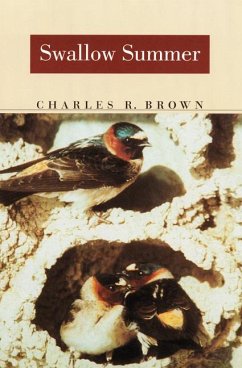Each May for fifteen consecutive years, Charles R. Brown has trekked to the Cedar Point Biological Station in western Nebraska to learn more about the behavior of colonial cliff swallows. He, his wife, and several student assistants spend the summers observing, catching, and banding swallows to determine life span, migration patterns, and nesting habits. Why study one species of swallow for fifteen years? With Swallow Summer Brown answers all the tourists, highway patrolmen, and local residents who have asked why he was leaning over bridges with nets, wading in mud up to his knees, or staring fixedly into culverts, where swallows often build their mud nests. He finds these birds fascinating. This book is about a passion for birds, but it is also about the personal challenges of scientific research. Brown provides a daily chronicle of field work at Cedar Point - including the joy of holding a swallow that has returned to the same site for eleven years and the inevitable frictions between researchers and local residents.
Hinweis: Dieser Artikel kann nur an eine deutsche Lieferadresse ausgeliefert werden.
Hinweis: Dieser Artikel kann nur an eine deutsche Lieferadresse ausgeliefert werden.


![Notes on the Summer Birds of the Gaspé Peninsula, Province of Quebec [microform] Notes on the Summer Birds of the Gaspé Peninsula, Province of Quebec [microform]](https://bilder.buecher.de/produkte/65/65500/65500320m.jpg)





